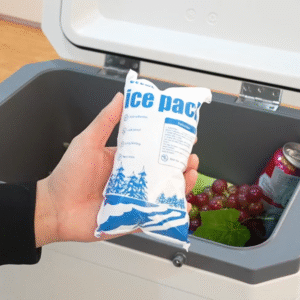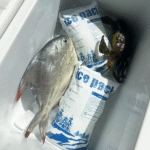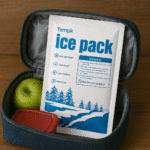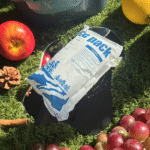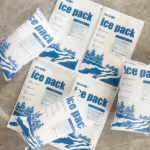Dry Ice Bricks vs. Dry Ice Packs – Which Is Best for Shipping Frozen Goods?
When shipping perishable goods such as seafood, pharmaceuticals, or biotech samples, maintaining an optimal cold chain is crucial. Both dry ice bricks and dry ice packs are solid CO2 solutions, ideal for preserving items at sub-zero temperatures. But how do you choose the best option for your specific needs in 2025? In this guide, we will compare the features, benefits, and applications of dry ice bricks versus dry ice packs and provide expert recommendations to help you make an informed decision.
-
What are dry ice bricks and dry ice packs, and how do they work?
-
How do you select the best dry ice solution for your shipment?
-
What benefits do dry ice bricks offer over traditional ice packs?
-
How do you ensure compliance with shipping regulations when using dry ice?
-
What are the latest trends and innovations in dry ice shipping for 2025?
What Are Dry Ice Bricks and Dry Ice Packs?
Dry Ice Bricks:
Dry ice bricks are large, solid blocks of frozen CO2, designed to provide extended cooling durations during long-distance shipments. These bricks are ideal for shipments requiring 48–72 hours or more of cooling, such as for biologics, frozen seafood, and pharmaceuticals. The slow sublimation rate of dry ice bricks ensures that the goods within the shipment remain frozen for longer periods.
Dry Ice Packs:
Dry ice packs are pre-packaged, flexible sheets or blocks of dry ice. These packs are typically smaller and designed for shorter-duration shipments (12–48 hours). They are commonly used for small shipments or for items that need to be chilled rather than frozen, such as chocolates, cosmetics, or small pharmaceutical parcels. Dry ice packs are easier to handle and more adaptable to various package sizes.
How Do Dry Ice Bricks and Packs Compare?
| Feature | Dry Ice Bricks | Dry Ice Packs |
|---|---|---|
| Cooling Duration | Up to 72 hours or more | Typically 12–48 hours |
| Handling | Requires gloves; heavier, bulkier | Easier to handle; lightweight |
| Cost | Generally more expensive | More affordable |
| Ideal Use | Long-distance shipments, large volumes | Short-distance shipments, small volumes |
| Regulations | Must comply with hazardous material shipping laws | Must comply with hazardous material shipping laws |
How to Select the Best Dry Ice Solution for Your Shipment
Key Considerations:
-
Duration of Shipment:
-
For long-distance shipments (over 48 hours), dry ice bricks are the better choice due to their longer cooling duration.
-
Dry ice packs are ideal for shipments that require cooling for up to 48 hours or less.
-
-
Type of Goods:
-
Sensitive goods like vaccines or biologics that require sub-zero temperatures for extended periods should be shipped with dry ice bricks.
-
For products like chocolates, meal kits, or cosmetics that only need to stay chilled, dry ice packs are sufficient.
-
-
Packaging and Space Requirements:
-
Larger shipments with bulkier goods benefit from dry ice bricks, while dry ice packs are more suitable for smaller packages.
-
-
Temperature Sensitivity:
-
Dry ice packs are perfect for products that don’t require extreme freezing temperatures but need to stay cold for a short duration.
-
Dry ice bricks provide more consistent cooling and are best suited for critical items that must be kept frozen during transit.
-
What Are the Benefits of Dry Ice Bricks Over Traditional Ice Packs?
Advantages of Dry Ice Bricks:
-
Longer Cooling Duration: Dry ice bricks maintain sub-zero temperatures for up to 72 hours, significantly longer than traditional ice packs, which typically last only 12-24 hours.
-
No Water Damage: Traditional ice packs melt into water, potentially damaging goods. Dry ice sublimates into gas, leaving no liquid behind.
-
Ideal for Critical Shipments: Dry ice bricks are the preferred choice for shipments of perishable goods, pharmaceuticals, and biotech samples that require consistent, long-term cooling.
Real-Life Example:
A biotech company shipping temperature-sensitive vaccines from the U.S. to Europe used dry ice bricks to ensure the products stayed frozen for the entire 48-hour journey, while traditional ice would have melted, compromising the integrity of the shipment.
How to Ensure Compliance with Dry Ice Shipping Regulations
To ensure safe and legal transport, dry ice shipments must adhere to both the Department of Transportation (DOT) and International Air Transport Association (IATA) regulations.
Key Regulations:
-
Proper Packaging: Dry ice must be packed in containers that allow CO2 gas to escape to prevent pressure buildup.
-
Labeling Requirements: Shipments containing dry ice must be marked with the “Carbon Dioxide Solid” label and indicate the weight of the dry ice.
-
Weight Limits: For air transport, dry ice is limited to 5.5 pounds (2.5 kg) per package, but this limit can vary depending on the carrier and route.
2025 Trends and Innovations in Dry Ice Shipping
The cold chain logistics sector is continuously evolving with technological advancements. In 2025, several innovations are enhancing the efficiency and sustainability of dry ice shipments:
Smart Packaging Solutions:
-
IoT sensors integrated into dry ice packages enable real-time temperature monitoring, ensuring that the shipment remains within the required temperature range throughout the journey.
-
Reusable dry ice containers and eco-friendly packaging materials are becoming more common, supporting sustainability and reducing operational costs.
Sustainability in Dry Ice Shipping:
-
There is a rising demand for biodegradable coatings on dry ice packaging, which help reduce environmental impact and align with stricter sustainability regulations.
AI-Powered Logistics:
-
AI systems are now optimizing the amount of dry ice used based on shipping conditions, which reduces waste and ensures that shipments are maintained at the ideal temperature without overpacking.
How to Safely Handle and Pack Dry Ice
Proper packing and handling of dry ice are essential to ensure both the safety of the goods being shipped and the well-being of the people handling it. Dry ice is classified as a hazardous material due to the risks associated with carbon dioxide gas buildup and extreme cold.
Key Packing Tips:
-
Use Ventilated Containers: Ensure that the container is vented to allow CO2 gas to escape, preventing pressure buildup.
-
Layer Dry Ice: When packing, place dry ice at the top of the shipment, as cold air sinks. Additionally, use insulation to slow the sublimation rate and maintain stable temperatures.
-
Label Packages Properly: Don’t forget to clearly mark the shipment with the correct dry ice and hazardous material labels as required by regulations.
Safety Tips:
-
Wear Protective Gloves: Always handle dry ice with insulated gloves to avoid frostbite.
-
Ventilate the Shipping Area: Ensure that the space where dry ice is stored is well-ventilated to prevent CO2 from accumulating.
Conclusion and Recommendations
Choosing between dry ice bricks and dry ice packs depends on several factors, including the duration of the shipment, the type of goods being transported, and the regulatory requirements. Dry ice bricks are ideal for long-distance, temperature-sensitive shipments, while dry ice packs are more suitable for short-term cooling.
Next Steps:
-
Evaluate your needs: Determine the duration and type of shipment to choose between dry ice bricks and packs.
-
Ensure compliance: Make sure your packaging meets DOT and IATA regulations, and use the correct labeling.
-
Optimize for sustainability: Consider investing in reusable dry ice packs and integrating IoT sensors to track temperature throughout the journey.
About Tempk
At Tempk, we specialize in cold chain logistics, offering high-quality dry ice solutions, including bricks and packs, to ensure the safe and efficient transportation of temperature-sensitive products. Our expertise in compliance, sustainability, and innovation makes us a trusted partner for industries ranging from pharmaceuticals to seafood. Contact Tempk today to optimize your cold chain shipping needs.
Call to Action:
For expert advice and tailored cold chain solutions, consult with Tempk today and explore how our advanced dry ice solutions can optimize your shipping processes.






